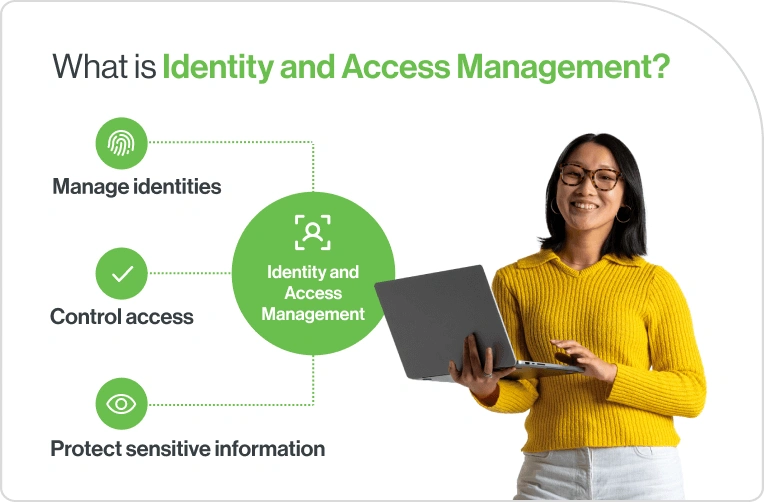What are some IAM methodologies?
The core components of IAM encompass various functionalities including:
Multi-factor authentication (MFA)
With MFA, users are asked to provide a combination of authentication factors to verify their identities. In addition to usernames and passwords, many organizations commonly use the time-based one-time password (TOTP) method, which requires users to provide a temporary passcode that has been sent via SMS, phone call, or email.
Single sign-on (SSO)
SSO allows an authorized user to securely log in to multiple SaaS applications and websites using only one set of credentials (username and password). SSO systems authenticate users with MFA and then, using software tokens, share that authentication with multiple applications. SSO can also be used to prevent access to designated assets or locations, such as outside websites and platforms.
The upside of using the SSO approach for IAM, beyond creating a more seamless login process for end users, is that it gives IT administrators the ability to establish permissions, regulate user access, and provision and deprovision users with ease.
Federation
Federation enables SSO without passwords (passwordless authentication). Using a standard identity protocol, like Security Assertion Markup Language (SAML) or WS-Federation, a federation server presents a token (identity data) to a system or application with which it has an established trust relationship. Because of that trust, users can then move freely between connected domains without having to reauthenticate.
RBAC and zero trust
Role-based access control (RBAC) is a method for restricting access to networks, sensitive data, and critical applications based on a person's role and responsibilities. Defined roles in RBAC may include end users, administrators, or third-party contractors. A role can be based on a user's authority, location, responsibility, or job competency. Sometimes roles are grouped together, so users with similar responsibilities in an organization who frequently collaborate can access the same assets.
By applying a zero trust security framework as part of RBAC, where very strict access controls are maintained with all users who request access to work assets, you can further prevent unauthorized access — and even contain breaches and reduce the risk of an attacker's lateral movement through the network.

